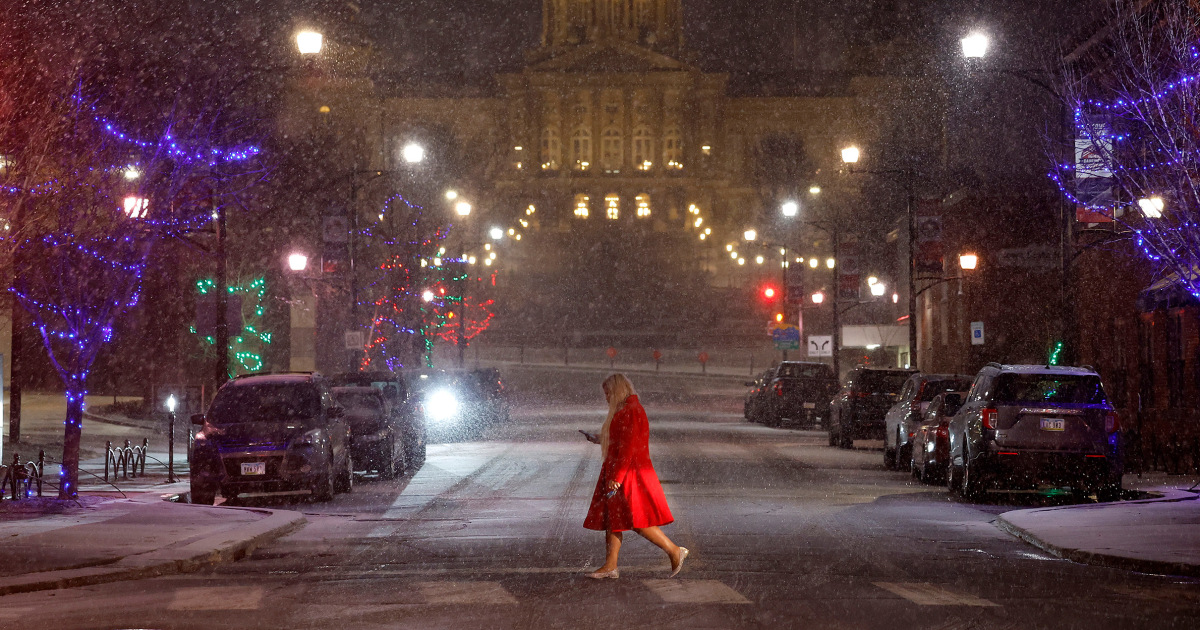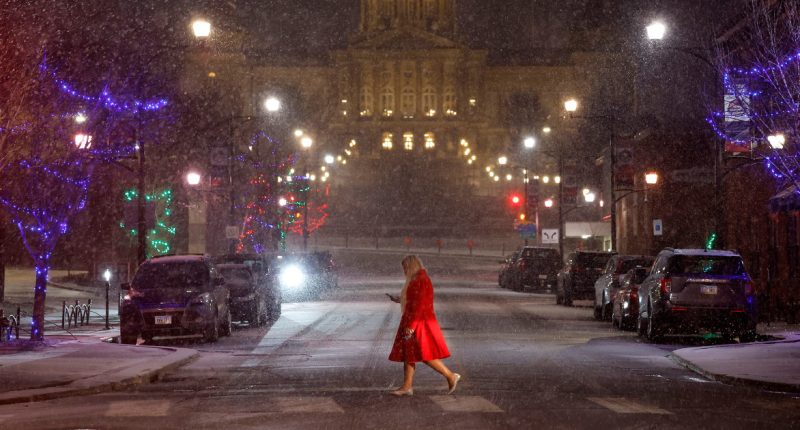
Storms are hammering much of the northern U.S., a welcome relief for some parts of the country that have received little or no snow in recent months.
A sluggish start to winter through early January has constrained ski areas and raised early concerns about the water supply for summer.
“We’re playing catch-up now,” said Dan McEvoy, a regional climatologist at the Desert Research Institute in Reno, Nevada.
About 800 monitoring stations track snow accumulation in the West, and more than 90% of those stations reported measurements below the median for this time of year, McEvoy said. It’s not unusual for parts of the West to trail seasonal averages, but it is rare for so many regions to fall behind at once.
In western states, the size of the snowpack influences how much water farmers can use, how challenging the wildfire season will be and how much power hydropower dams can generate. Climate scientists expect snowpack to decrease as the climate warms, further threatening a supply that’s already strained in most parts of the West.
Scientists have struggled to quantify climate change’s influence on snowpack broadly, but research published Wednesday in the journal Nature found that climate change was to blame for a declining trend in snowpack.
“Our analysis reveals that many of the world’s most populous basins are hovering on the precipice of rapid snow declines,” the authors wrote.
Previous studies have shown that snow cover has decreased. Quantifying snowpack (the amount of water stored as snow) is more challenging, because it varies significantly from year to year and it’s challenging to measure. Sometimes, a warmer atmosphere, which can hold more water, can increase snowfall or lead to more extremes.
“Snow has been such a bad canary in the coal mine,” said an author of the Nature paper, Justin Mankin, a climate scientist at Dartmouth University, who said he pursued the research because the United Nations Intergovernmental Panel on Climate Change wasn’t able to speak definitively about how overall snowpack was shifting.
For the research, Mankin and Alexander Gottlieb, an Earth systems scientist at Dartmouth, analyzed snowpack in 169 river basins in the Northern Hemisphere. They identified clear snowpack trends in 82 of those basins and sharp declines in the snowpack that provides water to populated regions. For 31 basins, the researchers were able to see that human influence — global warming — was driving changes.
Their research suggests many Northern Hemisphere basins are nearing quick losses that could reshape water supplies for more than 2 billion people.
“Once snow goes off a cliff, it accelerates off a cliff,” Mankin said. “We’re fundamentally unprepared.”
For much of the country, winter has just begun. On Jan. 1, just 20% of the continental U.S. had snow on the ground after a mild December, according to satellite analysis from the National Operational Hydrologic Remote Sensing Center. Recent storms have bumped that measure up to about 45% as of Wednesday.
McEvoy said a ridge of high pressure blocked moisture in December, leaving areas of the Rockies and the Great Plains dry. Parts of the Midwest, like Chicago, Minneapolis and the Dakotas, were barren of snow.
“There’s usually some snow on the ground in late December. There’s really been next to nothing,” McEvoy said of those cities, noting that monthly average temperatures in December were 10-15 degrees Fahrenheit above normal in parts of the Midwest.
Meanwhile, warm temperatures in the Pacific Northwest, which did get a few storms, hampered snowpack development. Rain also wiped away snow after storms in the Northeast.
Recent storms — which put 164 million people in the U.S. under weather alerts — will improve, but not alleviate, the situation.
“From what I’m seeing so far, it doesn’t appear to be a pattern that will completely wipe out snow drought conditions,” McEvoy said.
The National Oceanic and Atmospheric Administration’s Climate Prediction Center forecast a warmer and drier winter for most northern states, in part because of the influence of a strong El Niño, which is a naturally occurring pattern associated with warm ocean temperatures in the Pacific that slow trade winds.
“El Niño is the double whammy, with the background warming of climate change and the warm ocean water of the Pacific adding more heat and energy to the atmosphere,” McEvoy said. “That combination of things loads the dice for having a warm year.”
Source: | This article originally belongs to Nbcnews.com









